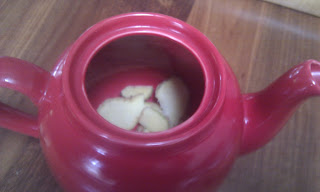'Tis the season to be jolly....fa..la..la..la..la'. And the season to be stressed, tired, indulgent, and for some, miserable. No matter whether you love or loathe this time of year, there is a good chance you will feel more stressed. Everyone seems to be really busy, trying to do, buy and see too much. The season of joy can all too often become the stressful season. Tense neck and shoulders, slee ping problems, upset digestion, anger or irritability are all signs and symptoms of a body that is experiencing stress. However, there are several things you can do to help your body and ensure you look forward to a fresh start in the New Year, feeling recharged, fit and healthy.:
· Learn to say ‘No’. It may not be good for your health to have a full social diary. Even during this busy time of year. or perhaps, especially at this time of year, schedule time in for down-time.
· Ensure you have at least 2 early nights to bed each week. This means in bed by 10:30pm
· Balance the festive food by making yourself a couple of dinners each week that are simple, and full of vegetables and salad.
· During periods of over-indulgence, and busy stressful times our bodies require more nutrients. At the very least consider taking a good B vitamin. Magnesium is useful to aid the relaxation of tense muscles and help with fatigue and insomnia. Vitamin C may also be beneficial as our bodies use up a lot of this vitamin when stressed.
· The world of herbs gives us many remedies to support our nervous system and adrenal glands. These include common herbs such as Chamomile, Lemon balm, St John's Wort and lavender, and lesser well known ones such as Withania, Skullcap and Rhodiola.
· Be kind to your liver. The liver works very hard not only when we drink alcohol, but also when we eat a lot of sugary and processed foods. Having AFDs (alcohol free days) are very important for your liver's health. There are other things you can do to encourage the health of this vital organ - lemon juice in warm water is a lovely wake up for the liver each morning, including bitter greens with an oil and lemon juice dressing most days is also very beneficial to the liver. If you are going to indulge, the herb St Mary's thistle is a naturopathic secret - it helps the liver process and detoxify alcohol! It may be worth getting hold of some St Mary's in a capsule form if you are going to a few boozy christmas parties.
Often this time of year can be when we take stock, and prioritise - hence the popularity of making New Years resolutions. Consider how important your health is in your life, and what you do on a daily basis to preserve and encouage it.

















